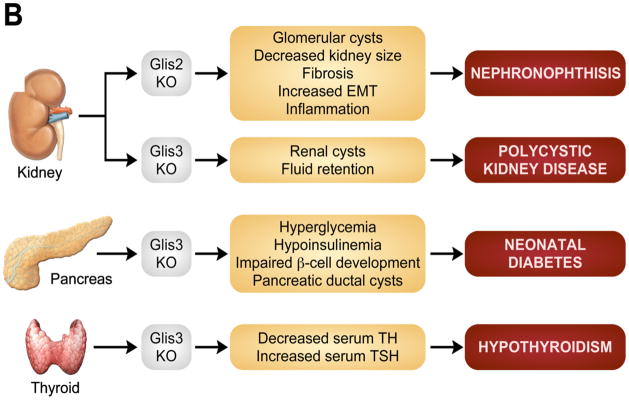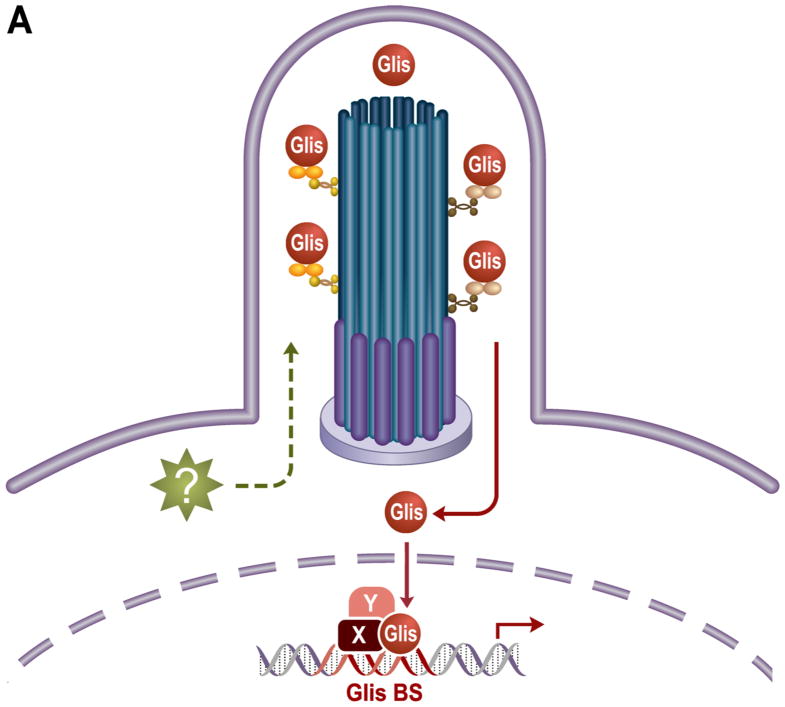Figure 2. Schematic representation of Glis signaling and its role in disease.

Glis2 and 3 localize to the primary cilium and defective Glis signaling is associated with the development of several ciliopathies. (A) An as of yet unidentified upstream signal may regulate the sub-cellular localization and activation of Glis proteins. During activation in the primary cilium, Glis proteins may undergo post-translational modifications or proteolytic processing and upon translocation to the nucleus, regulate the transcription of target genes through interactions with Glis binding sites (GlisBS) and transcriptional coregulators (X and Y). (B) Disruption of Glis signaling in the kidney, pancreas, and thyroid leads to the development of nephronophthisis and polycystic kidney disease, neonatal diabetes, and hypothyroidism, respectively.

